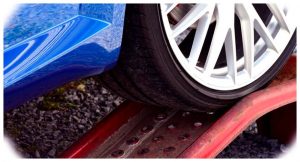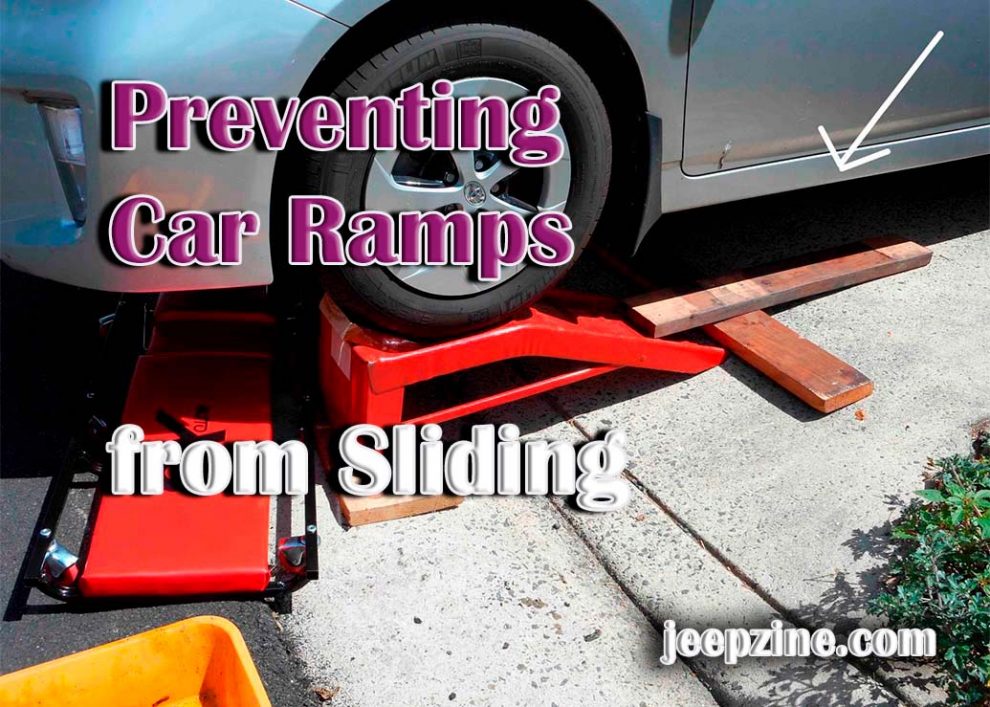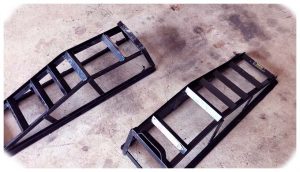Working on your car can be difficult, especially when you need to raise it off the ground. Car ramps are essential for this purpose, but they can sometimes slide while you’re beneath the vehicle. To ensure that your ramps remain stable and provide safe access to your car or truck, it’s important to understand what causes them to move and how to prevent it from happening. This comprehensive guide will discuss what causes car ramps to slide and provide several tips for preventing this from occurring.
What Causes Car Ramps to Slide?

How To Stop Car Ramps from Sliding
There are a few ways that you can prevent your car ramp from sliding while working on your vehicle:
-
Place Wooden Blocks Underneath The Ramp: Placing wooden blocks underneath each end of the ramp can help to provide traction and prevent it from moving when you drive up onto it. This is especially effective if your ramps are placed on asphalt or concrete, as the wood will provide a much-needed friction material and keep them in place.
-
Place Heavy Weights at The Bottom of The Ramp: Adding weights to each end of the ramp will help to keep it from shifting around while you’re working on your vehicle. This is especially effective for plastic ramps, as they tend to be very lightweight and easily move around when pressure is applied.
-
Use Traction Mats or Sandpaper: Placing traction mats or sandpaper underneath each end of the ramp can also help increase the friction between the ramp and surface, reducing slipping and making your car safer while working on it.
-
Secure Your Ramp With Bolts or Nuts: You can also secure your ramp with bolts or nuts by drilling holes into both ends and then screwing them in place with a wrench or socket set. This will ensure that your ramps stay put while you’re working on your car and won’t slip out from underneath you unexpectedly.
-
Choose an Appropriately Sized Ramp for Your Vehicle: Finally, make sure you choose a ramp that is the appropriate size for your vehicle. If the ramp is too wide or too narrow for your car, it can cause uneven weight distribution and make it more likely to shift around while you’re working on it.
Conclusion
Car ramps are essential for working on your vehicle, but they can sometimes slip and cause accidents if not properly secured. To prevent this from occurring, make sure to place wooden blocks underneath each end of the ramp, place heavy weights at the bottom of it, use traction mats or sandpaper to increase friction between the surface and ramp, secure your ramp with bolts or nuts, and choose an appropriately sized ramp for your car. By following these steps, you’ll be able to safely work on your vehicle without worrying about slipping ramps.


 Secure Your Ramp With Bolts or Nuts: You can also secure your ramp with bolts or nuts by drilling holes into both ends and then screwing them in place with a wrench or socket set. This will ensure that your ramps stay put while you’re working on your car and won’t slip out from underneath you unexpectedly.
Secure Your Ramp With Bolts or Nuts: You can also secure your ramp with bolts or nuts by drilling holes into both ends and then screwing them in place with a wrench or socket set. This will ensure that your ramps stay put while you’re working on your car and won’t slip out from underneath you unexpectedly.
Add Comment